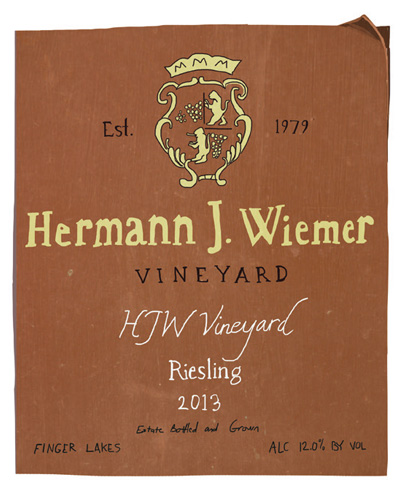Consistent high quality and a never-ending focus on improvement: these principles define the world’s classics, whether in art, automobiles, technology or, most certainly, wine. These ideals are how Burgundy came to guide the world of pinot noir and chardonnay, how Napa Valley became the New World’s benchmark for cabernet sauvignon, and how the Finger Lakes of New York are firmly planting the flag for riesling greatness in the United States.
Now, a region doesn’t achieve world acclaim by virtue of just a few good vines; it needs the support and drive of pioneering producers to help push the region forward and encourage others to come along. The great standard-bearer at the helm of the Finger Lakes revolution has been, and continues to be, Hermann J. Wiemer Vineyard.
When Wiemer planted his vineyard nearly 40 years ago, most of the region was planted to native American grape varieties (vitis labrusca). The area was deemed by most to be too cold and harsh to be a fine wine region for European wine grapes such as riesling; Charles Fournier at Gold Seal and Dr. Konstantin Frank were two of the rare exceptions who believed in vitis vinifera before Wiemer arrived. But Wiemer’s cool-climate viticultural experience in Germany led him to plant better vines, in a smarter way, and farm them more sustainably and thoughtfully than most vintners were at the time. By the early 1980s, Wiemer was producing rieslings that inspired many local naysayers to jump on the bandwagon and begin planting vinifera vines. At the time, there was no vinifera plant material commercially available in the Finger Lakes, so Wiemer, whose family had been in the vinegrafting business in the Mosel for nearly 100 years, started the Wiemer nursery. Today, the nursery provides the highest-quality grafted grape vines for the Finger Lakes, and sells stock to growers in California and Oregon as well.
Wiemer retired in 2007, handing over the reins to winemaker Fred Merwarth and agronomist Oskar Bynke. They’ve continued to work to perfect the estate’s riesling, paying particular attention in the vineyard. Not only do they continue to push forward Wiemer’s sustainable vineyard practices, they’ve been tweaking details such as the alignment of the vine rows, moving them to optimize airflow and sun exposure. When it comes to harvesting, they no longer pick by plot but instead by individual rows, bringing the grapes in over a period of time that can last numerous weeks, to mine the potential of their low-yielding sites.




opposite Wiemer on the east side of Seneca Lake, has been approaching viticulture in a similar manner for nearly as long as Wiemer himself. Both are consistently growing some of the best fruit in the region. Like Merwarth, they are also experimenting with small-lot vinification techniques to fine-tune their winemaking and highlight distinctive lots of wine.
But perhaps more important, after all of these decades, the wines are not just still very good, but continue to become better with each passing vintage. The current-release HJW Vineyard Riesling 2013 is assertively aromatic even at this young age, with tremendous texture and density,
fruit concentration and classic riesling acidity—an all-star composite of the best characters of this vintage. And while the 2013 today in bottle is a showstopper, the 2014 tasted from the tank this past spring will be an even greater wine. These and other future successes of the Wiemer estate will be accompanied by many of the other ambitious rising stars of the Finger Lakes who have learned from Wiemer, further solidifying the Empire State’s position as the classic riesling thoroughbred of the New World.
This story was featured in W&S Fall 2015.
illustrations by Michael Hirshon
This story appears in the print issue of fal 2015.
Like what you read? Subscribe today.















